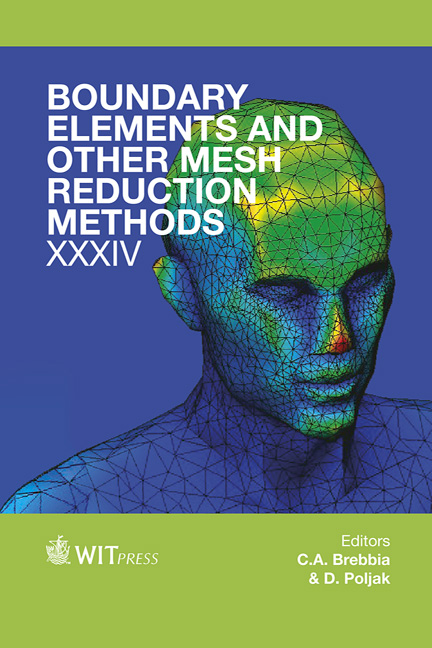A Meshless Method Based On Taylor Series
Price
Free (open access)
Transaction
Volume
53
Pages
11
Page Range
51 - 61
Published
2012
Size
259 kb
Paper DOI
10.2495/BE120051
Copyright
WIT Press
Author(s)
Y. Tampango, M. Potier-Ferry & Y. Koutsawa
Abstract
We study a meshless method based on Taylor series approximation. This method solves quasi-exactly the Partial Differential Equation (PDE) in the domain. The boundary conditions are applied by using a least square method as proposed by Zhang et al. for stabilizing collocation method. Sometimes, the convergence can only be obtained by splitting the domain in to several subdomains: a new bridging technique is proposed to match several polynomial approximations. Finally, numerical techniques like the Domb Sykes plot permits us to estimate the radius of convergence of the series. Keywords: meshless method, junction method, convergence analysis, Taylor series expansion. 1 Introduction Meshless methods are considered as promising alternatives to overcome the difficulties related to mesh generation. Each class of meshless method can be characterized by the form of the used shape functions, the most common ones being based on moving least square techniques [1], radial functions [2] or fundamental solutions [3]. In this paper we discuss another recent method proposed in Z´ez´e et al. [4], where the shape functions are high degree polynoms that are computed by solving locally the Partial Differential Equation. For instance in the case of the bi-dimensional Laplace equation, this analytical solution leads to a family of polynomial shape functions Re(x + iy)n and Im(x + iy)n. In this respect the presented method is boundary only, because the PDE is solved quasiexactly inside the domain. This method has several advantages. First the number of shape functions is much smaller than with the p-version of finite elements [5, 6].
Keywords
meshless method, junction method, convergence analysis, Taylor series expansion.





